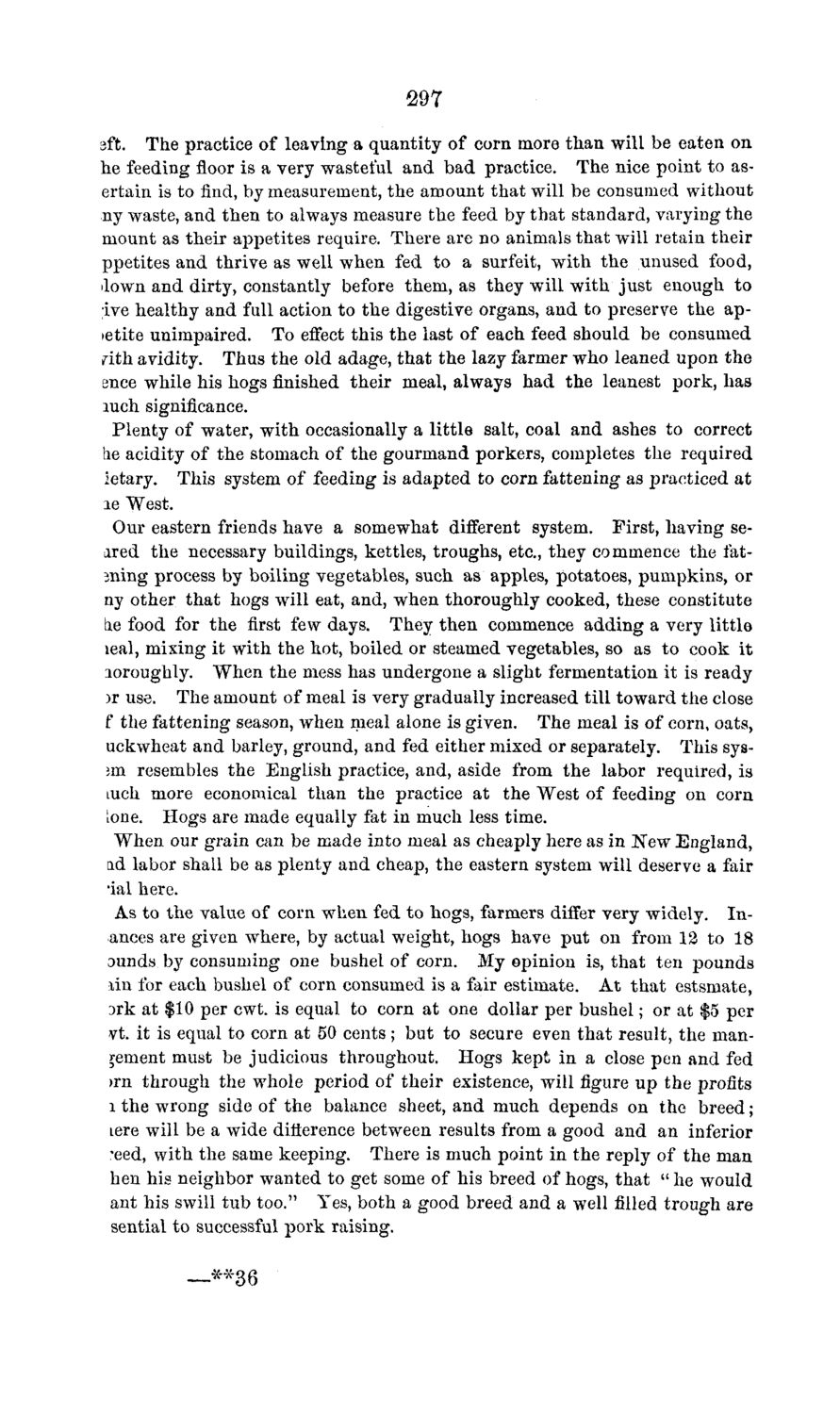| |
| |
Caption: Board of Trustees Minutes - 1869
This is a reduced-resolution page image for fast online browsing.

EXTRACTED TEXT FROM PAGE:
297 eft. The practice of leaving a quantity of corn more than will be eaten on he feeding floor is a very wasteful and bad practice. The nice point to asertain is to find, by measurement, the amount that will be consumed without ny waste, and then to always measure the feed by that standard, varying the mount as their appetites require. There are no animals that will retain their ppetites and thrive as well when fed to a surfeit, with the unused food, ilown and dirty, constantly before them, as they will with just enough to ;ive healthy and full action to the digestive organs, and to preserve the apietite unimpaired. To effect this the last of each feed should be consumed nth avidity. Thus the old adage, that the lazy farmer who leaned upon the ence while his hogs finished their meal, always had the leanest pork, has luch significance. Plenty of water, with occasionally a little salt, coal and ashes to correct he acidity of the stomach of the gourmand porkers, completes the required ietary. This system of feeding is adapted to corn fattening as practiced at le West. Our eastern friends have a somewhat different system. First, having seired the necessary buildings, kettles, troughs, etc., they commence the fat3ning process by boiling vegetables, such as apples, potatoes, pumpkins, or ny other that hogs will eat, and, when thoroughly cooked, these constitute tie food for the first few days. They then commence adding a very little leal, mixing it with the hot, boiled or steamed vegetables, so as to cook it loroughly. When the mess has undergone a slight fermentation it is ready )r use. The amount of meal is very gradually increased till toward the close f the fattening season, when meal alone is given. The meal is of corn, oats, uckwheat and barley, ground, and fed either mixed or separately. This sysjm resembles the English practice, and, aside from the labor required, is tuch more economical than the practice at the West of feeding on corn [one. Hogs are made equally fat in much less time. When our grain can be made into meal as cheaply here as in New England, ad labor shall be as plenty and cheap, the eastern system will deserve a fair 'ial here. As to the value of corn when fed to hogs, farmers differ very widely. Inances are given where, by actual weight, hogs have put on from 12 to 18 ounds by consuming one bushel of corn. My opinion is, that ten pounds lin for each bushel of corn consumed is a fair estimate. At that estsmate, Drk at $10 per cwt. is equal to corn at one dollar per bushel; or at $5 per vt. it is equal to corn at 50 cents; but to secure even that result, the ruanjement must be judicious throughout. Hogs kept in a close pen and fed >rn through the whole period of their existence, will figure up the profits I the wrong side of the balance sheet, and much depends on the breed; iere will be a wide dilierence between results from a good and an inferior 'eed, with the same keeping. There is much point in the reply of the man hen his neighbor wanted to get some of his breed of hogs, that " he would ant his swill tub too." Yes, both a good breed and a well filled trough are sential to successful pork raising. —**36
| |